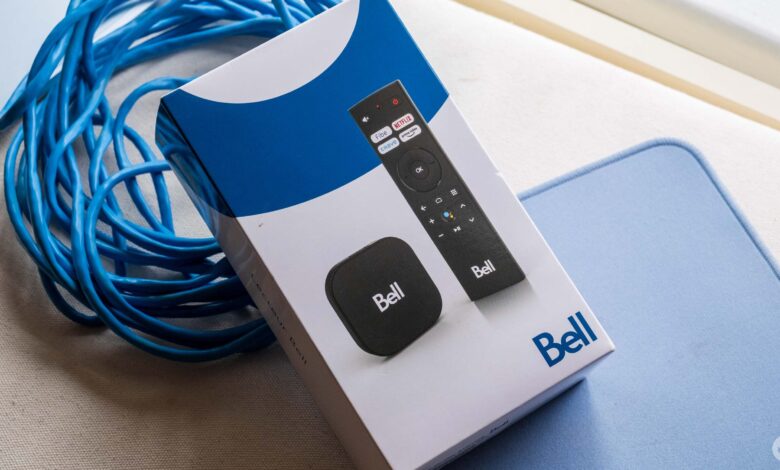Bell Embraces a Bold Future in Digital Broadcasting

CRTC's Hearing on Online Streaming Regulations
The Canadian Radio-television and Telecommunications Commission (CRTC) is currently conducting its fourth hearing regarding the Online Streaming Act. On the first day of discussions, Bell presented its views on how online streaming services should be regulated and shared insights into its approach to producing canadian content.
Vicky Eatrides, chairperson and CEO of the CRTC, emphasized that this hearing aims to create a lasting system that can adapt to changes in the industry. She highlighted the importance of promoting Canadian and indigenous content while fostering fair business practices among producers, distributors, and broadcasters. “This is about ensuring a healthy environment for all creators,” she stated.
Eatrides pointed out that this meeting addresses an imbalance in power dynamics within the broadcasting sector. This includes major Canadian companies like Bell Media and also international giants such as YouTube and Spotify. While this article focuses on Bell’s proposals, it’s worth keeping an eye on what other tech leaders like Apple and Google have to say regarding potential regulations.
Key Takeaways from Bell's Presentation
Steve Cummings, VP of content distribution at Bell, noted a significant shift: “In 2019, Canadians subscribing to streaming platforms surpassed those using traditional broadcasting services.” This trend indicates growing concern among large cable providers about their future viability.
Bell remains optimistic about navigating these changes successfully. Mark Graham, senior vice president for legal affairs at Bell, expressed confidence: “We don’t see a grim future for Canada’s broadcasting system; rather we view it as an prospect for growth.” He added that they are committed to investing creativity and resources into shaping this new landscape but stressed the need for regulatory support aligned wiht these goals.
A notable point raised by Bell was their belief that foreign streaming services shouldn’t be held to the same standards regarding Canadian content requirements as local companies are. This perspective suggests concerns over competition; if platforms like Netflix or Prime Video were required to invest heavily in local productions similar to what Canadian firms do, it could impact their ability to attract talent or maintain unique offerings.
Bell also argued for lifting certain regulations imposed on domestic broadcasters since they now compete against online entities not bound by similar rules. The company contended these regulations made sense when Canada had a more isolated media environment before digital platforms emerged. With global streamers operating without restrictions today, they feel local companies face unfair challenges.
The essence of Bell's argument is straightforward: fewer regulations would allow all players in media production more freedom financially—leading them toward creating better content tailored for audiences’ needs.
A Vision for Digital-only Broadcasting
The discussion then shifted towards envisioning a digital-only future in broadcasting. A representative from Bell highlighted funding issues related specifically to mandatory networks all broadcasters must carry—referred colloquially during hearings as ‘9.1(1)(h).’ These include channels familiar across Canada such as APTN or CBC News.
bell proposed establishing a fund where all media entities contribute money distributed among these essential channels while suggesting that carrying them online should come at no cost due simply being mandated by CRTC rules already established—making it easier than ever before for any broadcaster willing enough!
This plan hinges upon cooperation between various media players who would effectively pay into creating quality programming through contributions made via said fund while enjoying free access themselves—a win-win scenario!
Pushing Visibility For Local Content
Bell further suggested implementing measures ensuring discoverability of homegrown services featured prominently within larger streaming platforms' interfaces so viewers can easily find them amidst vast libraries available today! They worry bigger corporations might overlook showcasing CanCon adequately unless incentivized properly—which could hinder exposure opportunities significantly affecting struggling studios trying hard just get noticed!
A Call For Support Of Independent Broadcasters
Citing concerns raised by CRTC vice-chair Adam Scott regarding independent broadcasters facing challenges alongside 9.(1)(h) channels during questioning sessions led him inquire whether there exists any viable solutions proposed here too? Unfortunately though—not much clarity emerged from discussions surrounding independent outlets beyond suggesting perhaps mandating minimum quotas carried across various streamers rather!
And don't forget! NoveByte might earn a little pocket change when you click on our links helping us keep this delightful journalism rollercoaster free for all! these links don’t sway our editorial judgment so you can trust us! If you’re feeling generous support us here.





